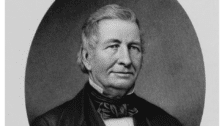Covered Bridge: Giving Clear and Actionable Feedback

Effective leadership depends on one’s ability to coach teams and individuals toward a defined goal. The Harvard Business Review just put out a great article on a simple guidance structure, written to help just about anyone toward improving their coaching skills. It’s written by Dr. Marshall Goldsmith, “one of the world’s leading executive educators and coaches” and author of over 30(!) books.
Goldsmith uses his experience with ‘Robert’ as an example. After a shining career in sales, Robert landed a senior executive position. Quickly, he discovered his charisma and sales skillset weren’t exactly helping him drive macro movement toward his company’s goals. So he sought out the good doctor’s help.
A 6-Part Structure for Giving Clear and Actionable Feedback
- Where are we going?
“This question tackled the big-picture priorities at the company. It forced Robert to articulate what he wanted for the company and what he was expecting from the executive.”
- Where are you going?
“Robert then shifted to his view of where each executive should be going. Then he turned the table and asked each person to answer the same question, thus aligning their behavior and mindset with his. In short order, they were replicating Robert’s candor and honesty about their responsibilities and goals.”
- What is going well?
“This wasn’t just a compulsory upbeat moment in a meeting. It helped Robert learn about good news that he may otherwise have missed.”
- Where can we improve?
“If you were your own coach, what would you suggest for yourself?” The ideas he heard amazed him, largely because they were often better than his suggestions. He was okay with that. He was not only shaping the world around him, he was learning from it.”
- How can I help you?
“When we offer our help, we are nudging people to admit they need help. We are adding needed value, not interfering or imposing. That’s what Robert was going for: building alignment between everyone’s interests.”
- How can you help me?
“Asking for help means exposing our weaknesses and vulnerabilities — not an easy thing to do. Robert wanted to be a role model CEO. By asking for ongoing help and focusing on his own improvement, he was encouraging everyone to do the same.”
“Robert involved his team in his own transformation toward becoming a better leader. Robert gave each team member carte blanche to call him on any leadership failing, to take personal responsibility for immediately contacting Robert if he or she felt confusion or ambiguity on direction, coaching, or feedback. Robert changed himself and his environment. Robert added structure. The team assumed responsibility.”
Good, old-fashioned transparency. So what happened?
“When Robert retired four years later, his final 360-degree feedback report put him in the 98th percentile on “Provides clear goals and direction.” What most amazed Robert was all the time he saved. He summed up: “I spent less time with my people when I was rated a 98 than I did when I was rated an 8. In the beginning, my team couldn’t tell the difference between social chitchat and goal clarity. By involving them in a simple structure, I could give them what they needed from me in a way that respected their time and mine.”
Connect With Your Community
Subscribe to stay informed!
"*" indicates required fields




























![95000-1023_ACJ_BannerAd[1]](https://vista.today/wp-content/uploads/2023/03/95000-1023_ACJ_BannerAd1.jpg)




















